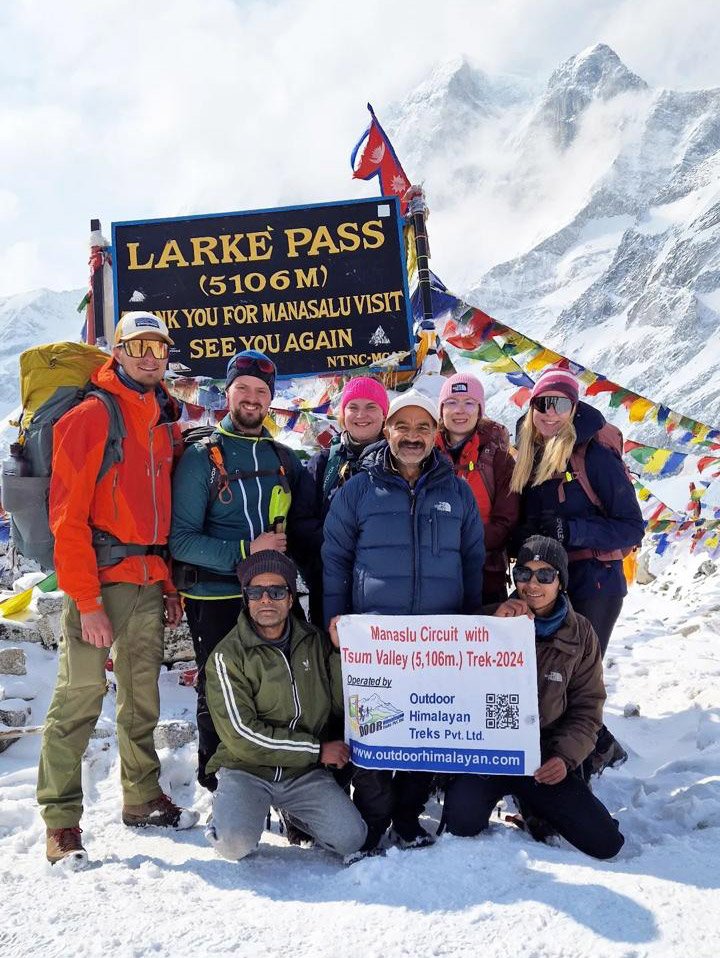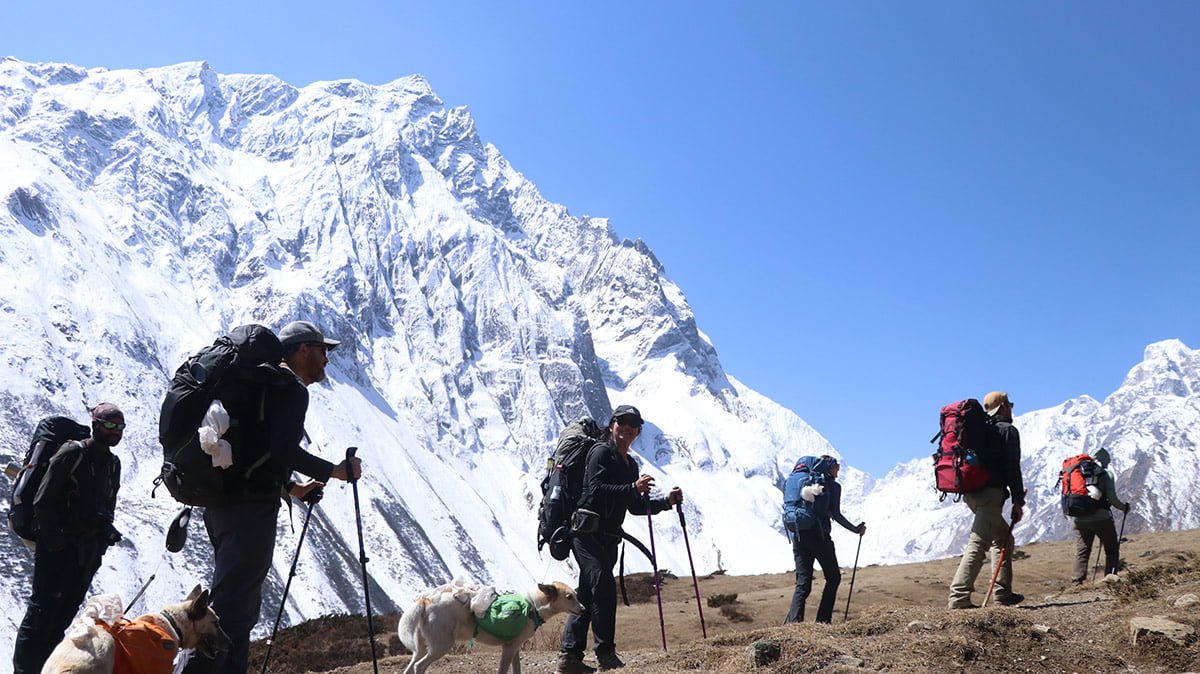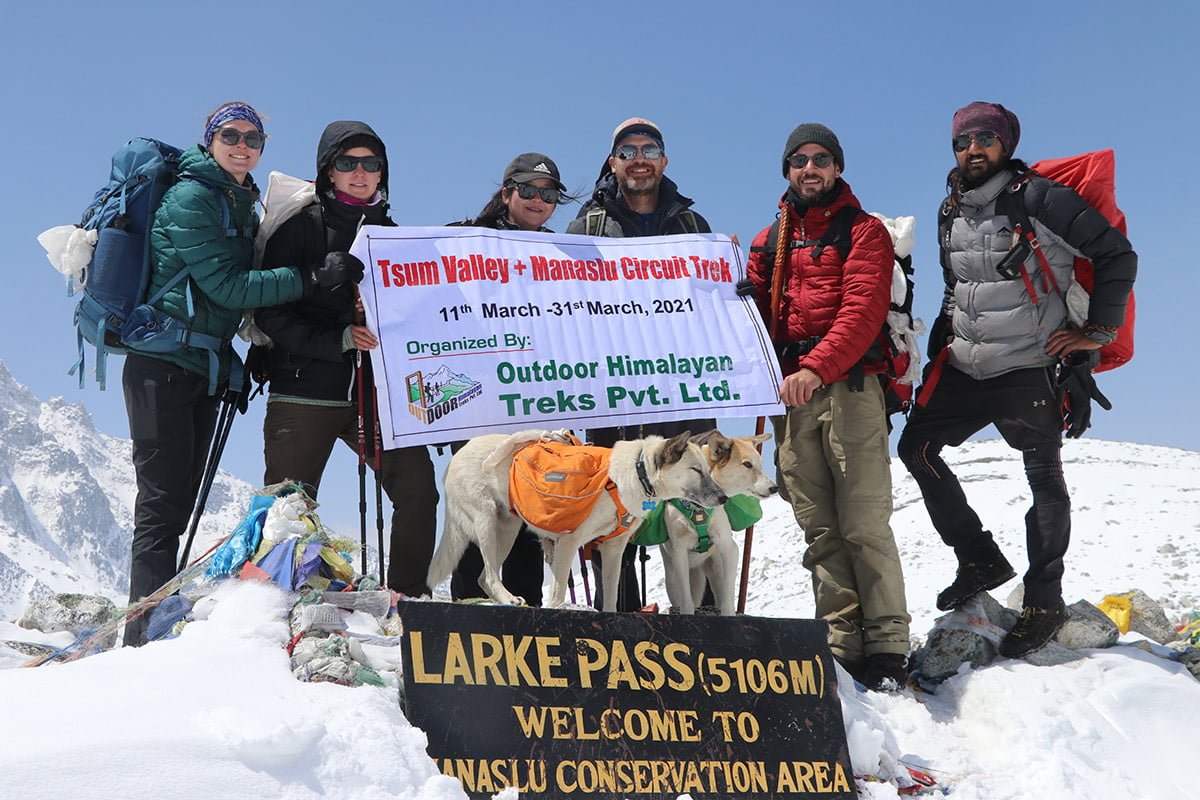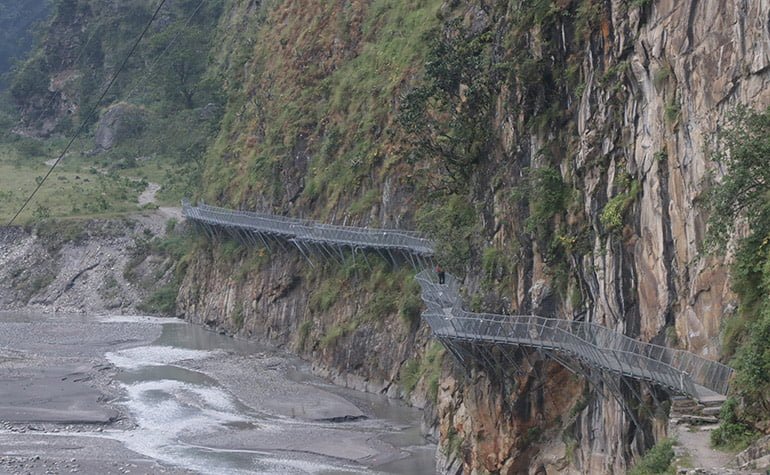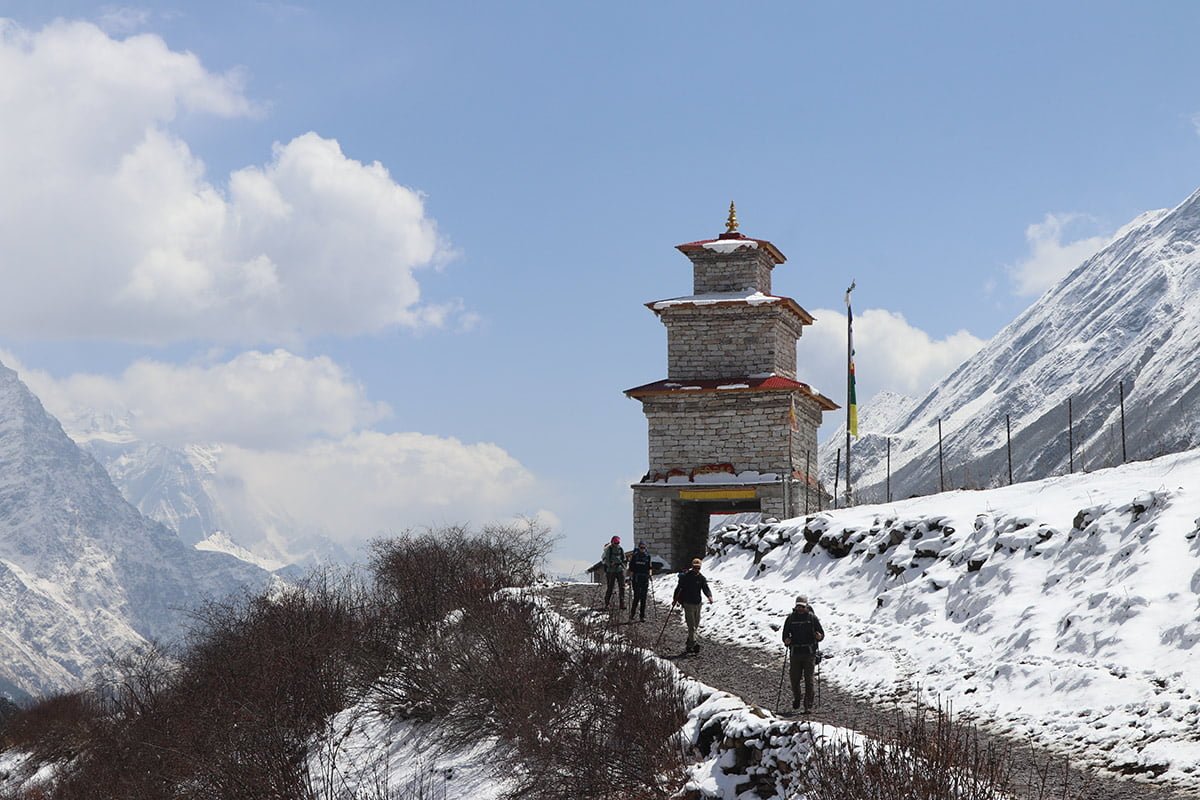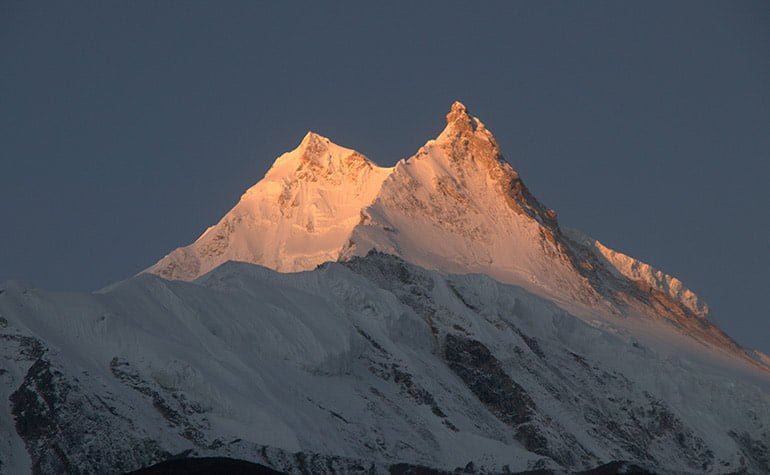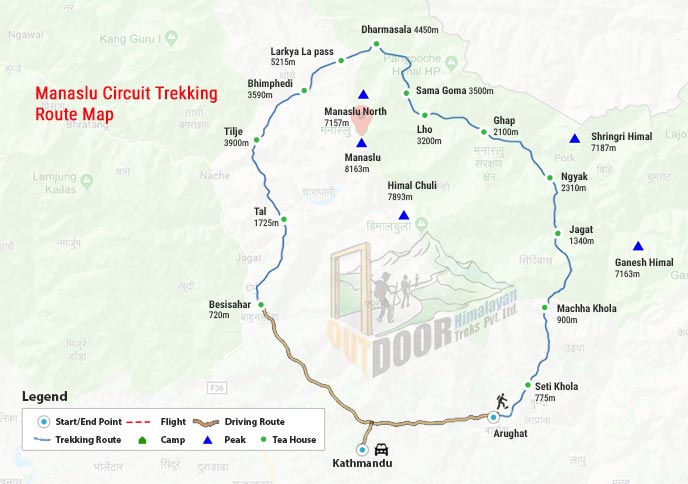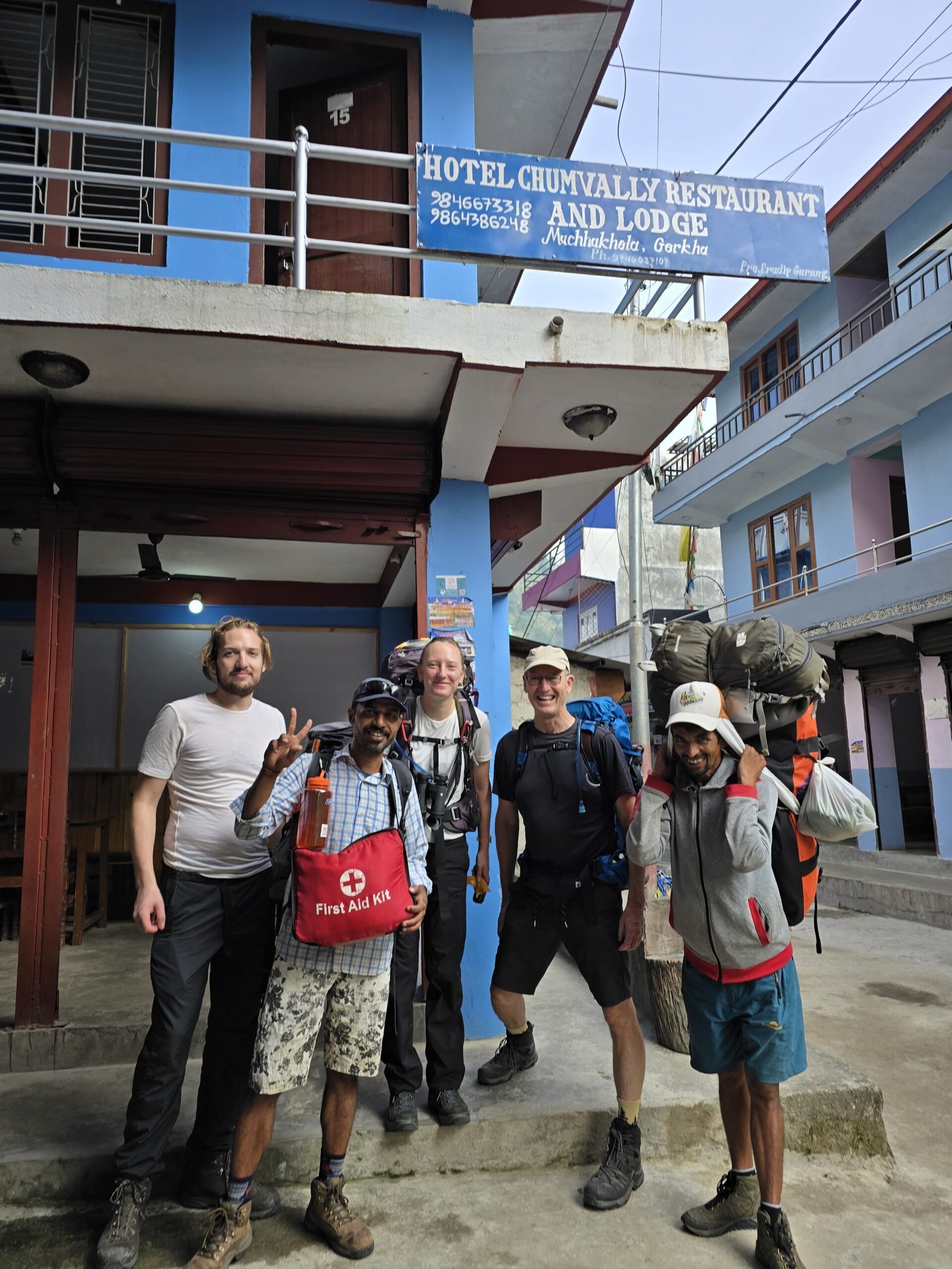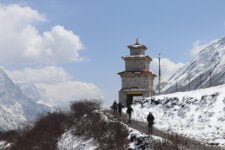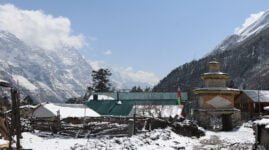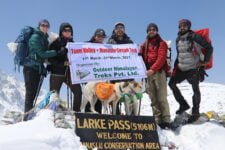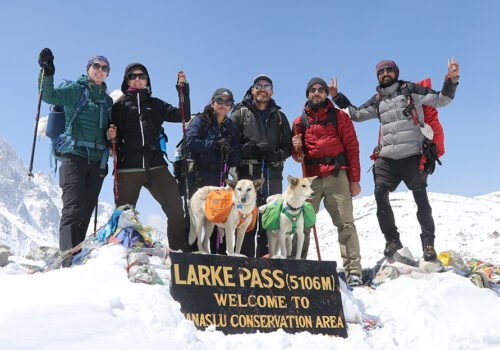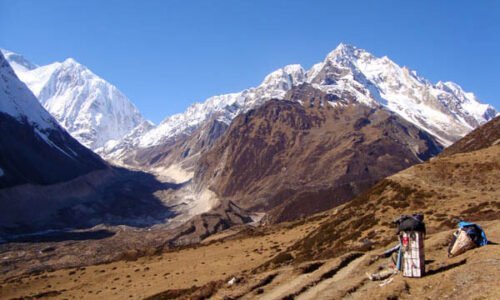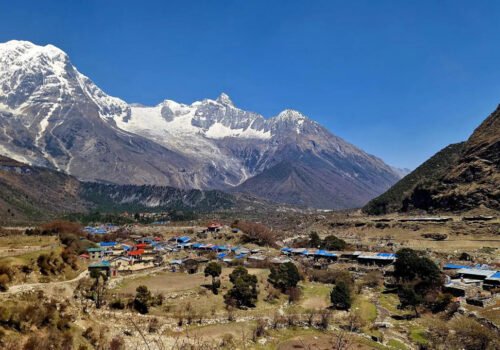Manaslu Circuit Trek with the Tibet border is considered an off-beat trek that delights trekkers with the untouched nature and authentic charm of the Manaslu region. Manaslu is a remote region with deep valleys, ancient Tibetan culture, diverse flora and fauna, beautiful landscapes, and towering snow-covered mountains. Manaslu Circuit Trek with the Tibet border takes travelers through lowlands, high-altitude settlements, Tibetan landscapes, and alpine pastures, and offers picturesque scenery. A day trip to Manaslu Base Camp (4800 m) and Pungen Gumba (4200 m) add thrill to this trek.
Manaslu Circuit Trek with Tibet Border FACTS
Physical Grading: Difficult
A difficult graded trek that demands trekkers/travelers to have a good level of physical and mental fitness to trek daily for long hours.
Max Elevation: 5,106 m (Larkya La Pass)
Phenomenal views of Himlung Mountain, Cheo Mountain, Annapurna II, and many others from the top of Larkya Pass.
Accommodation: Hotel, Teahouse
Basic but comfortable accommodation with limited facilities during the trek
Meals: Full Board
3-course Healthy and Hygienic meals during the trek
Best Season: Autumn & Spring
Clear views and comfortable trekking trails due to stable weather and temperature.
Trip Route:
Machha Khola – Jagat – Deng – Namrung – Shyala - Sama Gaon – Samdo - Tibet Border – Samdo - Dharmashala - Larkya La Pass – Bimthang – Tilije - Dharapani - Besishahar
Manaslu Circuit Trek with Tibet Border Highlights
- Less-explored and off-beat trek
- High-altitude settlements and alpine pastures
- Hike to Pungen Gumba (4200 m) and Manaslu Base Camp (4800 m)
- Tibetan culture and landscapes at the Tibet border
- Highest Pass Larkya La (5,106 m)
- Untouched nature and varying cultures and ethnicities
- Immerse yourself in the Himalayan lifestyle and culture of locals
- Stunning views of snow-capped peaks (Manaslu, Himlung, Cheo, Annapurna II, etc.)
Manaslu Circuit Trek with Tibet Border Overview
Manaslu is a remote region hence the pristine nature and the unexplored beauty of this region are mesmerizing. This is the least explored trek due to its remoteness and only in the 90s this trek region was opened for exploration. Slowly, the popularity of the trek in the Manaslu region is growing. It is the best choice for trekkers who prefer authentic natural beauty, peaceful trekking, and some cultural experiences. Manaslu Circuit Trek with the Tibet border is a challenging trek that takes trekkers to the maximum elevation of 5,106 m (Larkya La Pass) and Tibet border (5,100 m). However, this trek is completely worth it as it offers picturesque scenery and diverse landscapes. Solo trekking is not allowed as it is an off-beat trekking and requires a Manaslu restricted area permit along with ACAP and Manaslu Conservation Area to trek.
Manaslu Circuit Trek with the Tibet border journeys you through lowlands and low-altitude villages, high-altitude settlements, alpine pastures, and Tibetan landscapes. It takes you through banks of rivers and roaring fountains, in a Manaslu region with untouched nature and varying cultures and ethnicities. Our trek brings a deep experience of the high mountain region, sublime mountain sceneries, and varying flora and fauna. A different experience from that of popular Annapurna and Everest region treks. Find what is rural in Nepal in the true sense of the term. Named after Mt. Manaslu (8,163 m), the world’s 8th highest peak, the trek also has its spirited adventure sections. You won’t mistake it, especially at the time of crossing Larkya/Larke La Pass. The exploration day trip to Manaslu Base Camp (4800 m) and Pungen Gumba (4200 m) allures the travelers.
Manaslu Circuit Trek can be combined with Tsum Valley Trek. Besides this, in the Manaslu region, trekkers have numerous options such as the Manaslu Two Passes Trek, Manaslu Rupina La Pass Trek, and Tsum Valley Trek.
